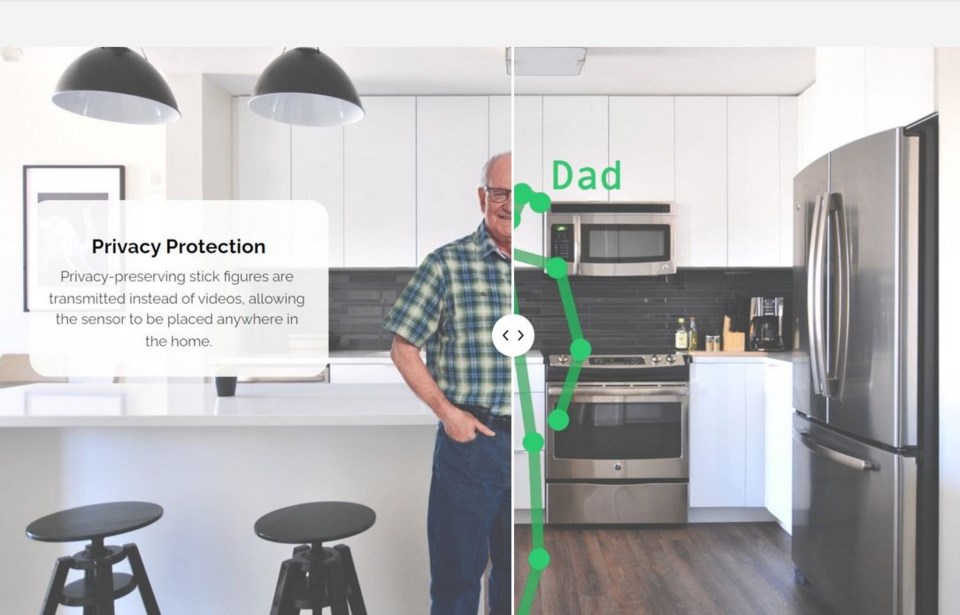Tucked away in the hallowed halls of UNBC, there is a lab filled with tech treasures to help those aging in the North.
The Centre for Technology Adoption for Aging in the North in the Teaching Laboratory building holds many items featuring advancements in technology geared to support older adults wherever they are at.
Built on a partnership between UNBC, Northern Health, and AGE-WELL, programs focus on testing, piloting, implementing, and promoting new and existing technology solutions tailored to support older adults and caregivers in northern and rural communities.
From a team of two in 2020 that started the CTAAN program to the 16 people on the team currently, Emma Rossnagel, research manager, said they are a large and thriving team engaged in quite a number of projects.
Right now there is an ongoing project featuring a remote monitoring systems study.
“We are looking for pairs of people,” Rossnagel said.
“So someone that is 65 plus and a care partner, and that could be a spouse, an adult child, a friend — they don’t have to live together and we’re looking for people to have these remote monitoring systems placed in their households with the aim of delaying the transition to long term care, delay or prevent emergency room utilization or hospitalization, support caregivers and care partners with caring for their loved one.”
“The ultimate goal is to have that person age in their community longer,” said Dr. Shannon Freeman, academic director, Centre for Technology Adoption for Aging in the North.
For the study they are looking for 150 pairs where at least one participant lives in the province.
“What’s really cool about this study is that we have four different types of monitoring systems that people can choose from,” Rossnagel said.
“When someone signs up for the study we will see what suits their needs. So if you’re worried about falling and how to prevent falling, some of the systems have different ways of predicting that. Are you looking for a wearable technology or non-wearable technology?”
Options include a wristwatch and a motion sensor that can locally convert the image of a person to a stick figure to preserve privacy.
“The really interesting aspect of that technology is that it can recognize faces so it can detect if a stranger comes into the home,” Rossnagel explained.
“It can also recognize, for instance, if there is an area rug with the edge flipped up and notify that as a fall risk. This technology is very advanced in this area. To be able to remotely monitor people, who for all intents and purposes can be independent who just need that little extra support for peace of mind.”
There are other advantages to monitoring a loved one, Freeman added.
“This kind of project would definitely help someone who wanders,” Freeman said.
“It would equip them with different technologies so they could monitor their loved one. There are great technologies out there to support people who do that because you know wandering is a very meaningful activity, right? On the weekend we wander through the Farmers’ Market, we wander around the mall, you don’t have a set purpose and this is something we do naturally throughout our life — we walk all through the park. We don’t have a plan of where we’re going to go or what we’re going to do. We just immerse ourselves in nature.”
The remote home monitoring will allow the client to wander in a way that is safe, Freeman added.
“The caregiver can set whatever boundaries that are acceptable to that person,” she said.
“So that boundary might be the front door at night. So that’s where the sensor is and they can go out during the day but in the middle of the night the caregiver needs to know their loved one is safe or maybe the loved one can wander around the neighbourhood but the caregiver can ping them and find them when it’s time to come home. So these technologies empower the caregiver to set those boundaries — is it the end of the street? Is it the front door?”
CTAAN is currently in recruitment for this year-long no-cost study.
During the intake people are made aware of the options available to them so they can make an informed decision on what monitoring system is best suited for their circumstances.
“And then we monitor them to make sure their goals are being met,” Freeman said.
After the year is complete, people can keep the equipment but if there is a subscription to use it they would have to pay for that,” Rossnagel said. “But they do get a $200 honorarium once the study has been completed.”
The obligation for the clients is four or five surveys conducted over the phone that take about 10 minutes to complete.
“It’s pretty light on the research participants and it’s just a little check in that doesn’t impact their lives. They just keep doing what they’re doing day to day and we’re just hoping to evaluate if it does make it easier to age in place safer using the technology and if they feel more supported,” Rossnagel said.



